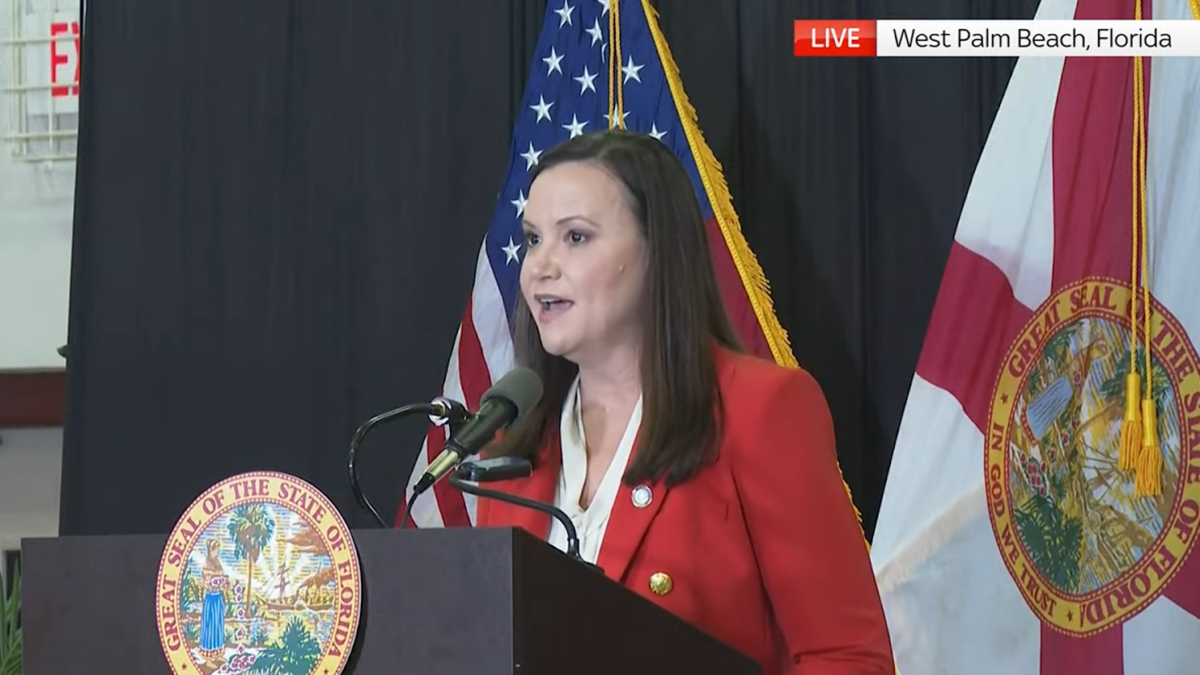Vice President Kamala Harris wants to tinker with the tax code because “working families deserve a break.” She promoted the plan in Tuesday’s debate with former President Donald Trump and in her newly released agenda.
The Harris plan would give “more than 100 million working and middle-class Americans … a tax cut,” her agenda says. But what she really means is she wants to create more government spending and give some folks free money, on the backs of taxpayers who don’t qualify for the pricey plan.
Harris aims to bolster the Child Tax Credit and the Earned Income Tax Credit, and beyond that, to boost the Child Tax Credit to $6,000 for families with newborn children.
These tax credits were meant for lower-income people, but the plan will likely have unintended consequences, according to Warren Hudak, a federally licensed tax practitioner and past president of the Pennsylvania Society of Enrolled Agents. He has testified before Congress on tax matters.
“The problem is, it’s not targeted. It’s not outcomes based,” Hudak told The Federalist. “Who are we helping, and how are we helping? The problem with the tax code — using it for these kinds of policies — it just gives away money to use for anything they want. I can tell you, there’s a reason why they’re poor, and it isn’t because they make great choices.”
Think about it. What happens when you (if you) get a tax refund? Some Americans put it into savings, use it to buy a more reliable car, pay down debt, or allocate the extra money for a myriad of other responsible uses.
Others take that tax return, the biggest lump sum they will see in the year, and go on a spending spree. Finally, they can treat themselves to a vacation, an expensive new gaming console, or a big-screen TV.
They can do that because it’s their money; they earned it, right?
Actually no. Many did not earn it. Beyond a refund, many tax filers receive a payment that far exceeds what they paid in taxes.
Refundable and Nonrefundable Tax Credits
There are two kinds of tax credits, refundable and nonrefundable. A nonrefundable credit can reduce your tax burden. For example, if you owe $100 in taxes but you have a $75 nonrefundable credit, you will only pay $25 in taxes. If you have enough nonrefundable credits, you can take your tax burden all the way down to zero.
A refundable credit can take you beyond zero, wiping away your entire tax burden — if you have any — and giving you money, in the form of a tax return, beyond what you paid into the system.
A portion of the Child Tax Credit is refundable. Each child under 17 is worth $2,000, and of that, the maximum “Additional Child Tax Credit” is $1,700 for 2024. That $1,700 is the refundable portion.
Let’s say you have one child and that qualifies you for a child tax credit of $2,000. You owe $1,000 in taxes. The credit brings your tax liability down to zero, and you get an additional $1,000. If you have two children, add another $1,700 to your refund, for a total of $2,700.
And under the Harris plan, that new baby you’re expecting next year will be another $6,000, for a total of $8,700 in refund money. Hello, new hot tub!
“So, you’re getting somebody else’s money,” Hudak said.
The Child Tax Credit is not for everyone. If you file single and earn $200,000 or more, or file jointly with a household earning $400,000 or more, the Child Tax Credit starts to decrease. And single filers earning more than $240,000 and joint filers earning over $480,000 are not eligible for the credit. Your taxes pay for the refundable credits for other families.
Then there is the Earned Income Tax Credit for the adults in the household. This is another refundable credit for low-income households. A single tax filer with no children earning less than $18,591 in 2024 could receive a credit of up to $632. If you have two children and earnings of up to $55,768 (single) or $62,688 (married filing jointly) the maximum Earned Income Tax Credit is $6,960.
The credit has income guidelines, with eligibility for those earning up to $66,819 in a household that is married and filing jointly.
You must earn something to be eligible for this credit. Social Security or unemployment benefits do not quality. Selling goods online, self-employment, running errands, and doing tasks for others do qualify as ways to be considered an earner.
“It’s so easy to cheat on the Earned Income Tax Credit,” Hudak said. The rate of fraud from this tax is huge, he said.
“The Earned Income Tax Credit has no effect on certain welfare benefits,” according to TurboTax. A refund is not considered income when determining eligibility or benefit amounts for programs such as Temporary Assistance for Needy Families (TANF); Medicaid and Supplemental Security Income (SSI); the Supplemental Nutrition Assistance Program (SNAP); and low-income housing.
Millions of low and middle-income Americans receive the Earned Income tax Credit, and it is helpful; but it is not a long-term answer to year-round inflation stress — and it doesn’t lift people out of poverty.
Yet Harris wants to expand this program because it is popular with low-income voters. It will increase the burden on certain taxpayers and supersize the national debt, passing more misery down to future generations of Americans who won’t be able to ignore the bill.









